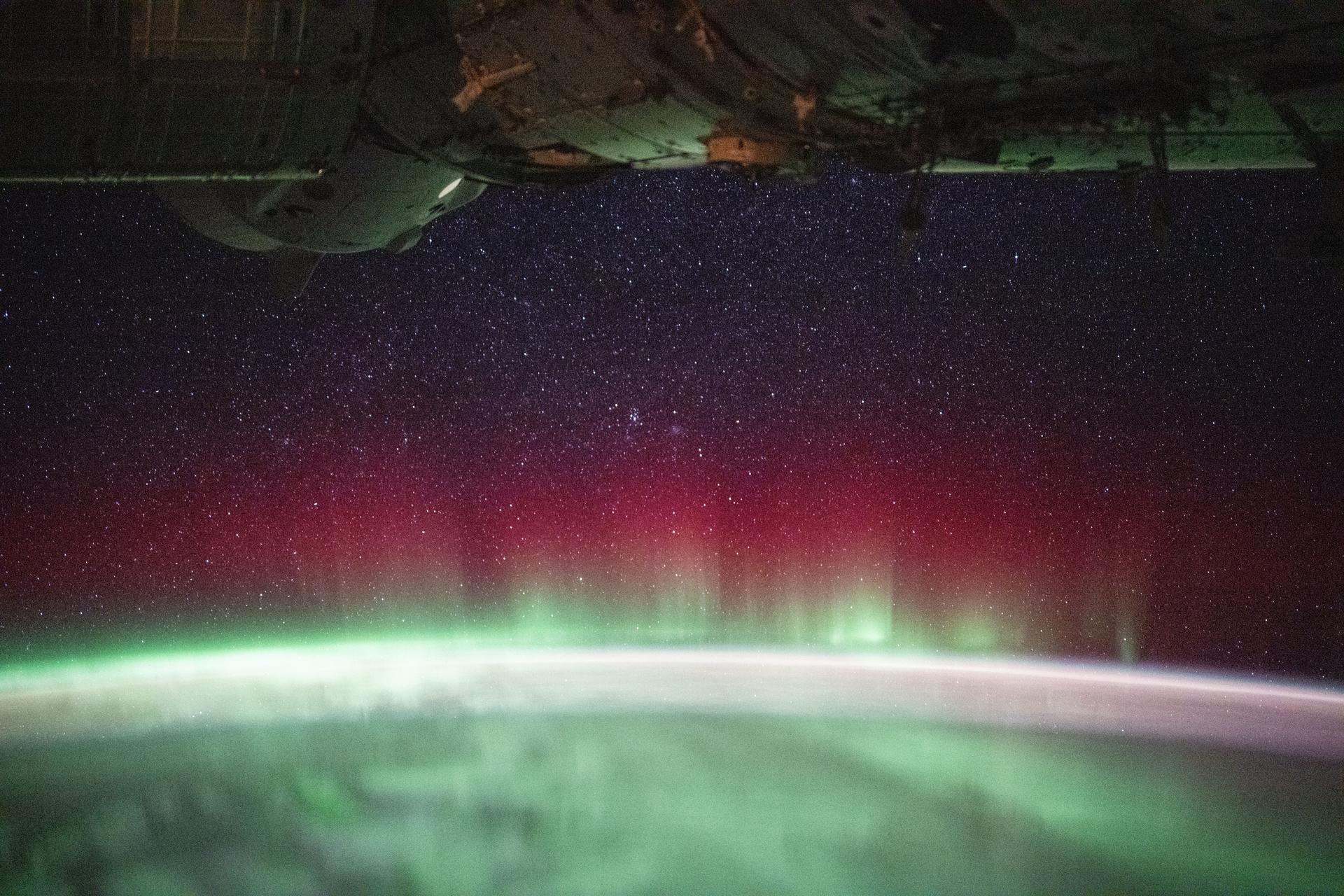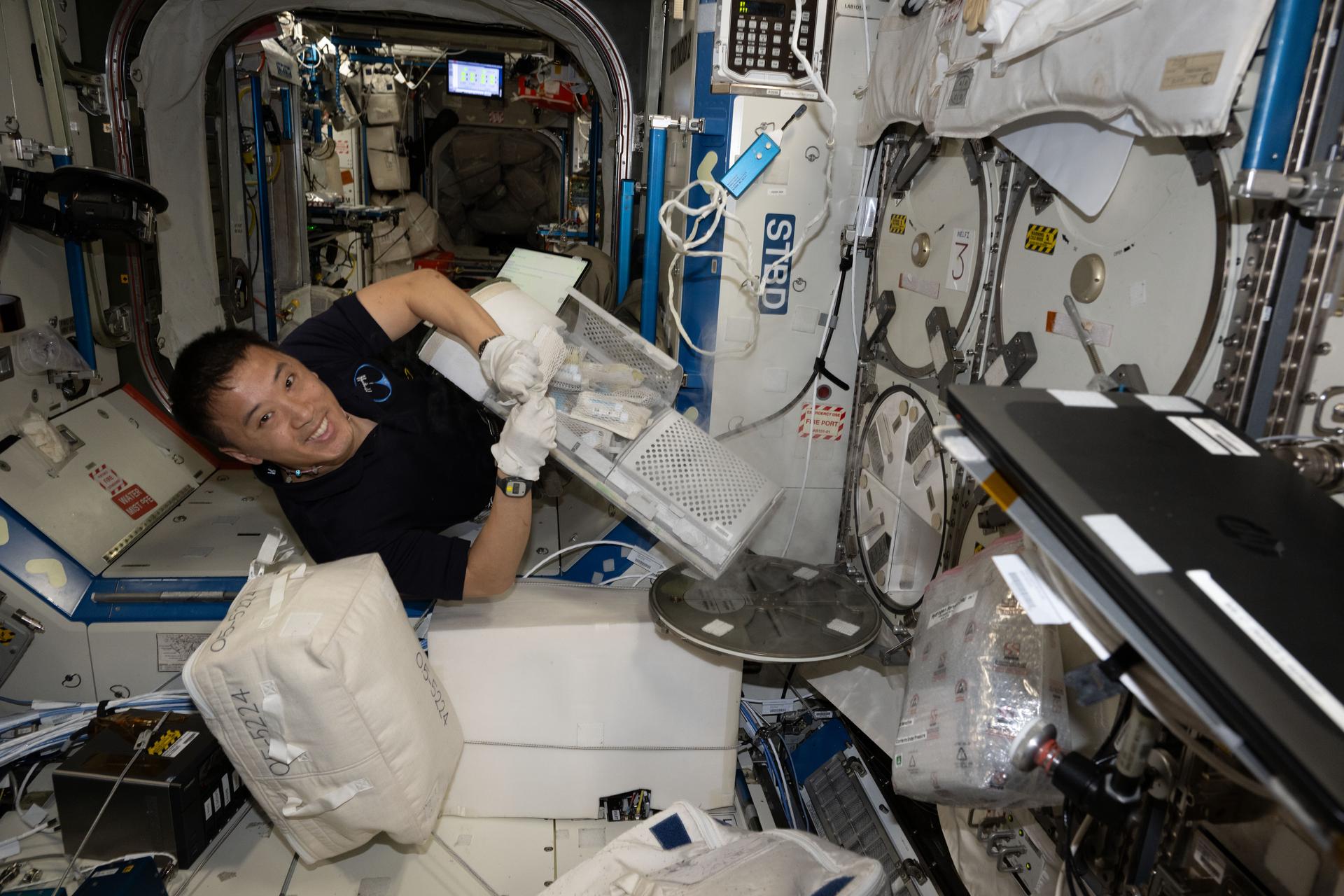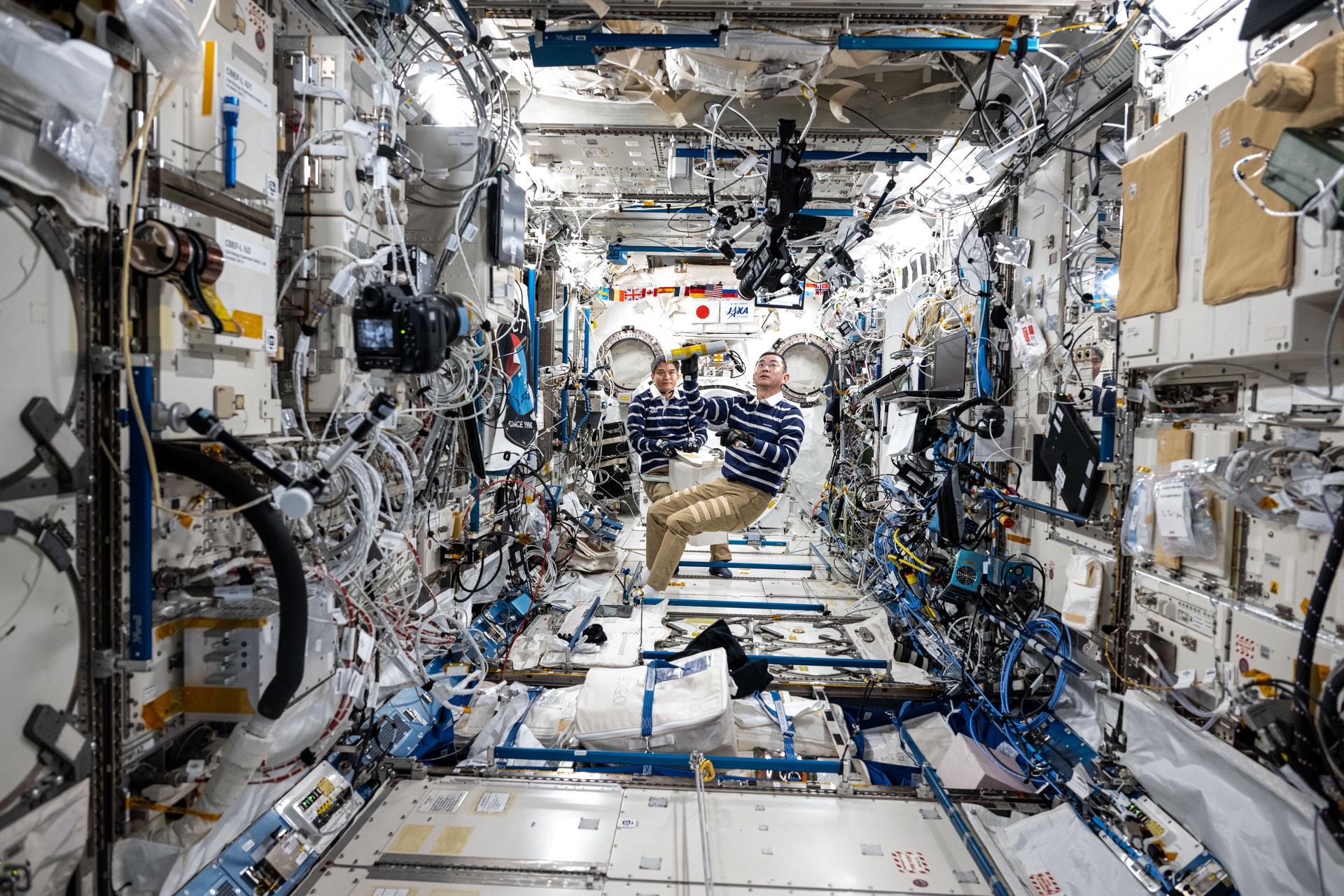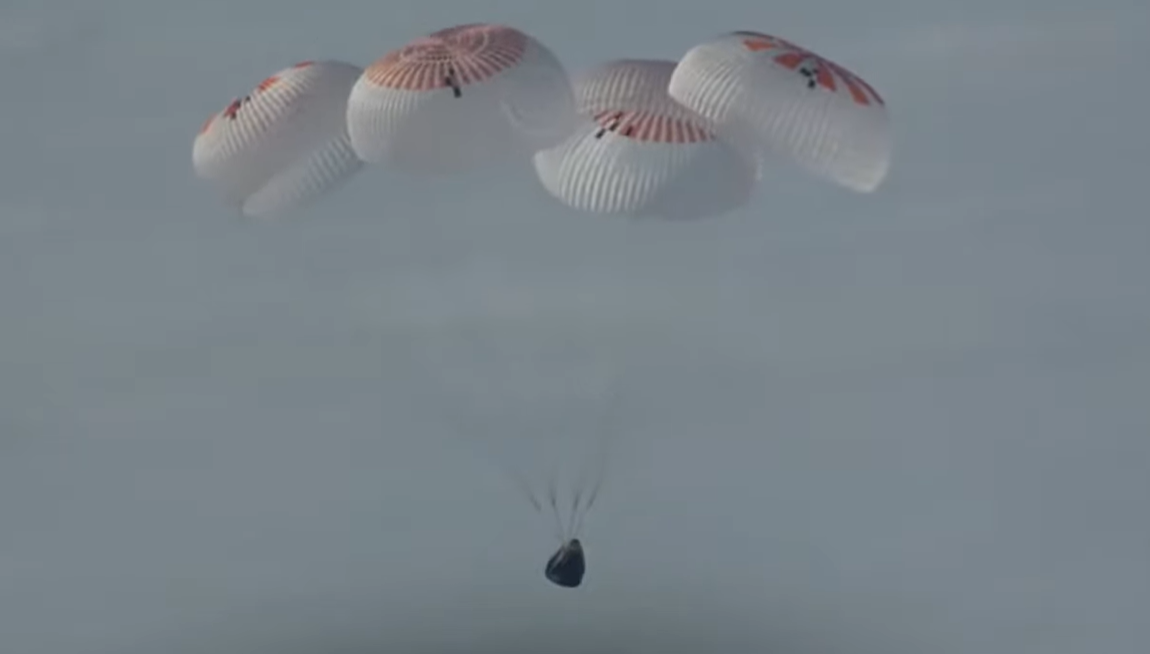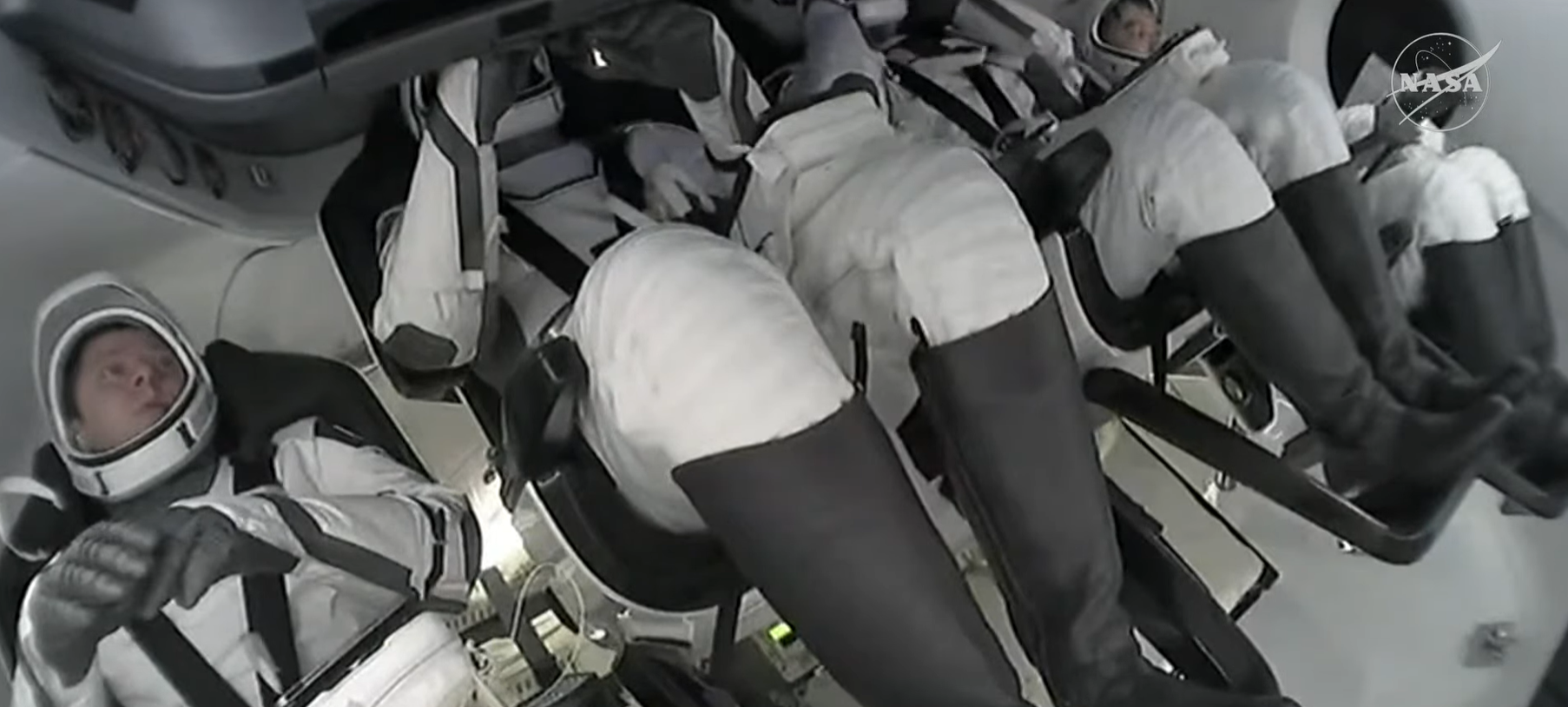Crew Tackles Cardiac Research, Cargo Ops, and Spacesuit Checks
Heart and blood pressure studies led the research schedule for the Expedition 73 crew on Wednesday informing scientists how the cardiovascular system adapts to weightlessness. The International Space Station residents are also gearing up for the next SpaceX Dragon cargo mission and cleaning spacesuits for potential spacewalks later this year.
A suite of 14 human research investigations, also known as CIPHER, has been underway aboard the orbital lab for several years providing doctors continual insights into an astronaut’s health in space. The growing database of knowledge helps crew members train for long-duration missions, maintain their fitness in orbit, and prepare for the return to Earth’s gravity.
NASA Flight Engineers Mike Fincke and Zena Cardman began their shift in the Columbus laboratory module with blood pressure checks and artery scans for the cardiac research portion of the CIPHER investigation. Fincke led the CIPHER biomedical operations first measuring Cardman’s blood pressure then scanning her arteries with the Ultrasound 2 device. Doctors on the ground monitored the activities in real time to learn about the unique cardiovascular risks astronauts face when living and working in space.
Afterward, Fincke reviewed the upcoming Dragon resupply mission due to visit the orbital outpost next week. The four-time space station visitor examined the areas where the new cargo will be stowed and studied the tools he will use to monitor Dragon’s approach and rendezvous. Cardman joined NASA Flight Engineer Jonny Kim and assisted him as he serviced components on a pair of spacesuits in the Quest airlock throughout his shift. Kim also spent some time Wednesday reviewing Dragon’s cargo operations.
Flight Engineer Kimiya Yui of JAXA (Japan Aerospace Exploration Agency), who is on his second spaceflight, juggled an array of science and maintenance duties throughout his shift on Wednesday. During the first half of his day he configured a robot camera for a ground operations test and collected airflow measurements in the pressurized mating adapter where the SpaceX Dragon crew spacecraft is docked to on the Harmony module. After lunch, Yui replaced a pair of air quality sensors in the Destiny laboratory module then set up and wore the sensors that would measure the blood flow in his brain as he slept overnight.
Station Commander Sergey Ryzhikov and Flight Engineer Alexey Zubritsky, both Roscosmos cosmonauts, continued their cardiac research on Wednesday splitting their day on a pair of human research experiments. The duo first attached electrodes to their chests for an electrocardiogram that recorded the heart’s electrical activity to detect potential space-caused heart issues. Afterward, Ryzhikov and Zubritsky replaced the electrodes with sensors on their hands, fingers, feet, and toes and measured how blood flows in the tiny vessels, or microcirculatory system.
Roscosmos Oleg Platonov spent the first half of his shift downlinking Earth imagery of North and South America and replacing life support gear inside the Nauka science module. Next, he spent the rest of his day getting up to speed with station systems and conducting a regularly scheduled hearing test.
Learn more about station activities by following the space station blog, @space_station on X, as well as the ISS Facebook and ISS Instagram accounts.
Get the latest from NASA delivered every week. Subscribe here.
Powered by WPeMatico
Mark A. Garcia



